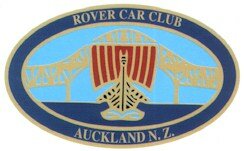
![]()
Changes of lighting for Continental touring may be required. Advice on the best procedure can be obtained from The Rover Company Limited, Technical Service Department.
Jacking the car
Four tubular jacking brackets are fitted under the body lower rail, behind the front wheels and just in front of the rear wheels.
To raise one corner of the car:
1 Remove the rubber dust excluder from the appropriate jacking point.
2 Fit the pivoted extension on the jack into the tube up to the stop on the extension. This extension can be lowered or raised by turning the handle either one way or the other.
3 Turn the handle until the road wheel is clear of the ground. To tower the car, reverse these operations.
If it is desired to raise the car with means other than those supplied, suitable jacking points are:
Front: Under the centre of the front cross-member.
Rear: Under the axle casing.

A-Jack
B-Rubber plug
Wheel changing
1 Slacken the five wheel nuts.
2 Jack up the corner of the car.
3 Remove the nuts and gently withdraw the wheel over the studs.
4 If available, place a drop of oil on the stud threads, to assist in subsequent replacement.
5 Fit the wheel, tighten the nuts as much as possible, then lower the car to the ground and lock the nuts securely.
Body care
It is always preferable to clean the bodywork with water and sponge, using plenty of water; wherever possible the surface should be freely hosed. After drying with a chamois leather, it should be polished in the usual manner, using any of the good brands of wax car polish.
As an alternative, if the body is only dusty, it can be wiped over with a soft, dry cloth and then polished, but great care must be taken to avoid scratching the surface.
It is well periodically to wash the underside of the car, to prevent mud pockets and the consequent tendency for rust formation.

Wheel changing
A-Wheel nut
Chromium cannot rust, but in instances where it is used on ferrous metals, it does not prevent the accumulation of red oxide on the chromium surface. Although continual polishing is not necessary, dirt must be removed periodically if the original high polish is to be maintained.
Ordinary metal polishes cannot be used, as some of them contain solutions which act as a solvent to chromium. The occasional use of a good brand of polish that has been specially prepared for chromium plate will be found useful.
The seats are trimmed with high-class leather free from any artificially embossed grain. Nature should show itself in every piece of high-class leather. The growth marks, vein marks and other natural marks and variations of grain that go to make up the character are the charm and hall-mark of top-grade leather. It is most important that detergents are not used when cleaning the seats, etc. Use a damp cloth with a little mild soap if necessary.
Location of chassis serial number
The chassis number will be found on a plate affixed to the left-hand front door pillar. Always quote this number when writing to the Rover Company or your Distributor or Dealer on any matter concerning your car.
Location of engine serial number
The engine number is at the rear left of the engine adjacent to the back of the top rocker cover.
Do not quote this number unless requested.



